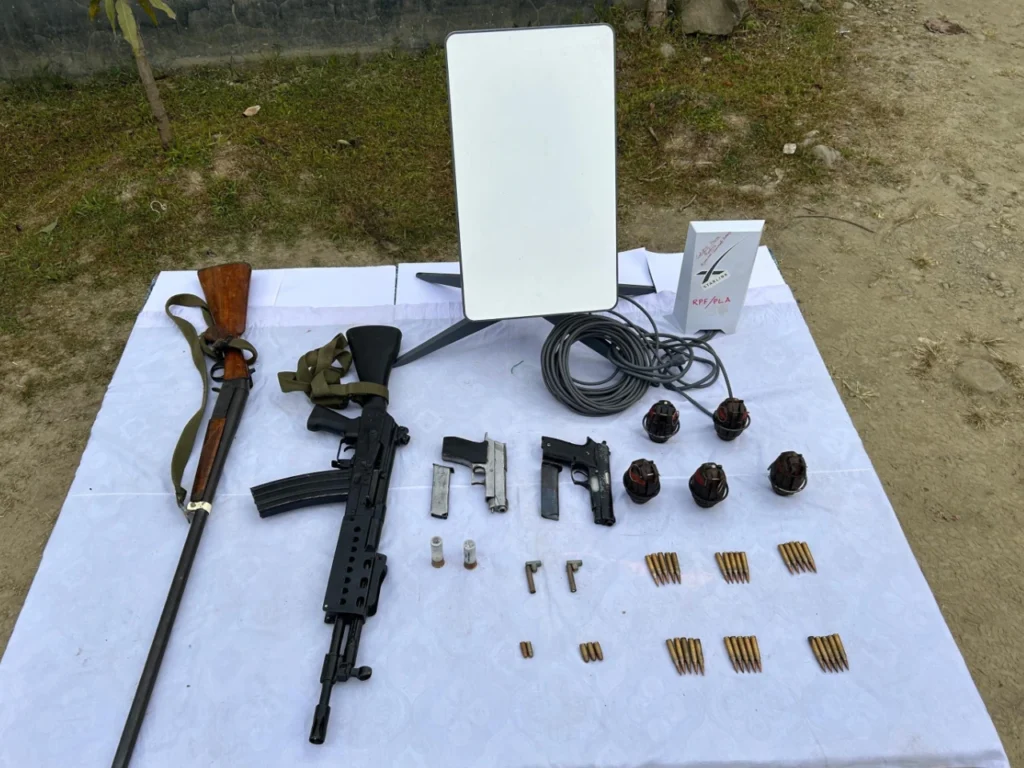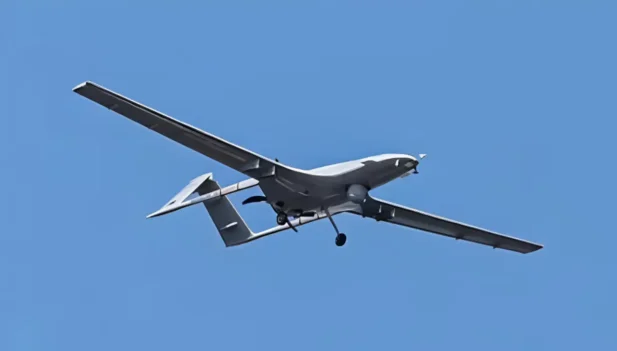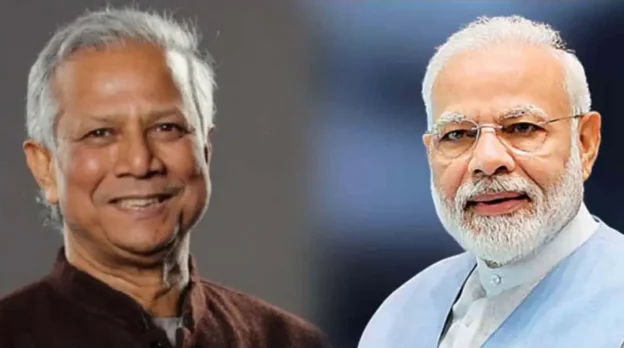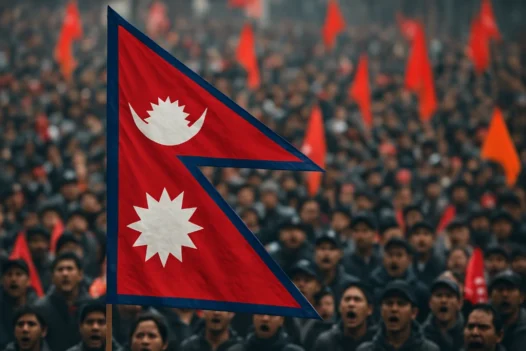The recovery of a Starlink device, alongside arms and ammunition, by Indian security agencies has brought fresh attention to the ongoing conflict in Manipur. The device was reportedly found during an operation in Keirao Khunou village of Imphal East district on December 13. Believed to belong to the proscribed People’s Liberation Army (PLA) and its political front, the Revolutionary People’s Front (RPF), the discovery has sparked widespread speculation, especially after Elon Musk, the founder of Starlink, denied the devices were operational in India, calling the reports “false” on X (formerly Twitter).
In a joint operation conducted by the Spear Corps of the Indian Army and state police across the hill and valley regions of Churachandpur, Chandel, Imphal East, and Kangpokpi districts, a significant cache of weapons was recovered on December 16. The haul included 29 firearms, such as sniper rifles, automatic weapons, pistols, and country-made mortars, alongside grenades, ammunition, and other war-like stores. Among the recovered items was a satellite dish and receiver marked with the Starlink logo and inscribed with “RPF/PLA,” raising critical questions about how the proscribed Meitei militant outfit might have accessed such technology.
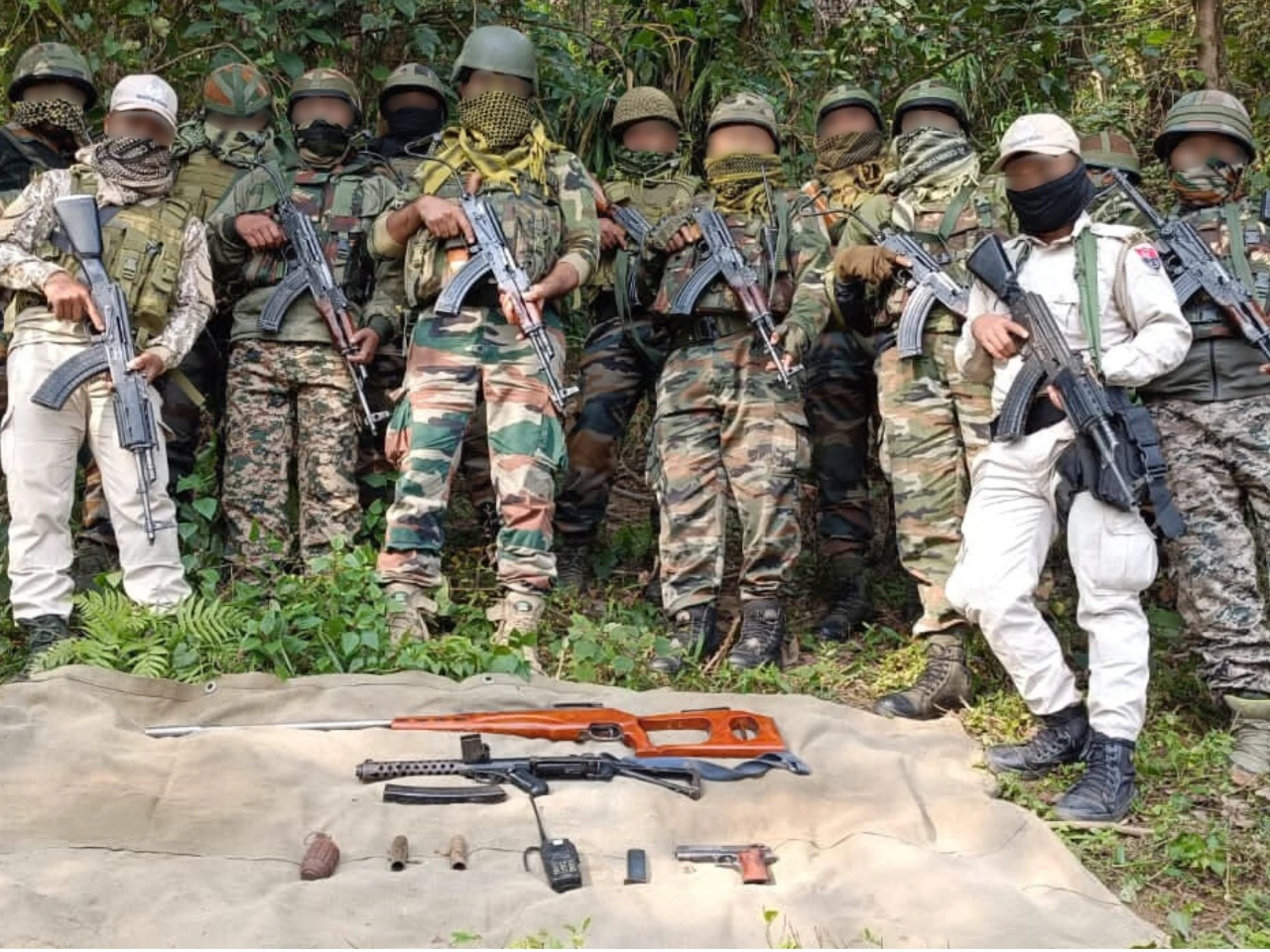
While the authenticity of the device has been confirmed by army officers on condition of anonymity, they suggest there are substantial reasons to believe it was being used by the PLA from bases in neighbouring Myanmar. However, Musk’s denial remains firm, stating that Starlink beams have “never been turned on” in India. Some senior army officials also echoed doubts about the device’s compatibility within Indian territory, pointing to Starlink’s lack of operational approval due to unresolved security concerns.
The Starlink device has since been sent to the Department of Telecommunications and the Ministry of Electronics and Information Technology for forensic examination. Even as investigations continue, senior military officials are not dismissing the possibility that the PLA is using bases in Myanmar to access Starlink and gather intelligence on Manipur or its bordering areas.
The PLA, however, faces growing challenges in Myanmar. Their operations have been hampered by attacks from the People’s Defence Forces (PDFs), which have allied with Chin-Kuki groups in Myanmar. These groups oppose the PLA and other Meitei insurgents for siding with the Burmese junta and undermining the democratic revolution launched by the PDFs following the military coup in February 2021.
According to sources in Myanmar’s National Unity Government (NUG), which operates both in exile and clandestinely within the country, over 4,000 Starlink devices are currently in use in Myanmar. The junta-led State Administration Council (SAC) has banned Virtual Private Networks (VPNs), encrypted messaging apps like Signal and WhatsApp, and restricted social media platforms such as Facebook, Instagram, and X, leaving only Telegram and TikTok accessible. As a result, Starlink-enabled communication has seen a dramatic rise. A variety of technologies, including walkie-talkies, long-range mesh networking devices, and satellite systems, are being employed to circumvent these restrictions.

These technologies face significant challenges. Walkie-talkies have become expensive, and signal jammers deployed by the junta frequently disrupt their use. Mesh networking devices, though effective, suffer from limited bandwidth and require a consistent power supply. Range extenders fail entirely during internet shutdowns. In such conditions, satellite-based internet, particularly Starlink, has emerged as the sole viable option in areas with frequent communication blackouts.
A report by rest of world highlights the proliferation of Starlink devices in Myanmar, particularly in conflict zones like Sagaing, Magway, Karenni, and Kachin. According to the report, the Myanmar Internet Project estimates that over 3,000 Starlink dishes are currently in use. A spokesperson for the project is quoted as saying that Starlink is the “only viable solution for end users” due to its affordability and user-friendly design compared to other technologies requiring advanced technical expertise.
The rest of world report claims that in Karenni, where the junta has cut internet and mobile networks, small internet cafes equipped with Starlink have sprung up, providing connectivity at about 1,000 kyat (50 cents) per hour. The report also quotes David Eubank, director of the humanitarian group Free Burma Rangers, also emphasised the importance of Starlink in conflict-affected areas. According to him, Starlink has enhanced the group’s ability “to do humanitarian assistance, to know what’s going on, provide quicker relief, document and report human rights abuses, and be able to save lives.”
Indian defence officials monitoring the situation believe it is plausible that some of these devices have been acquired by the PLA and other insurgent outfits. A senior military officer explained that while a terminal is required to operate Starlink, its use on Myanmar soil could provide significant strategic advantages to insurgent groups operating in Manipur. Citing Starlink’s widespread use in Myanmar, officials suggest that such technology could easily be adapted for intelligence-gathering or other operational needs.
As the forensic examination of the recovered device continues, the incident has added another layer of complexity to the already volatile situation in Manipur, raising concerns over the use of advanced technology in insurgency.

